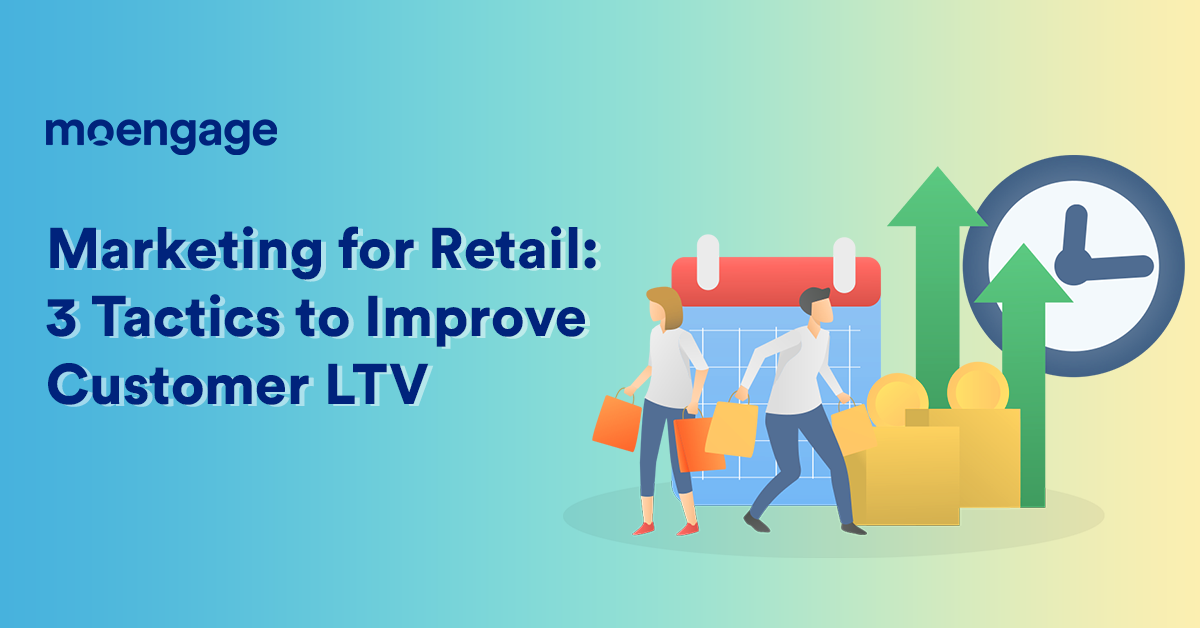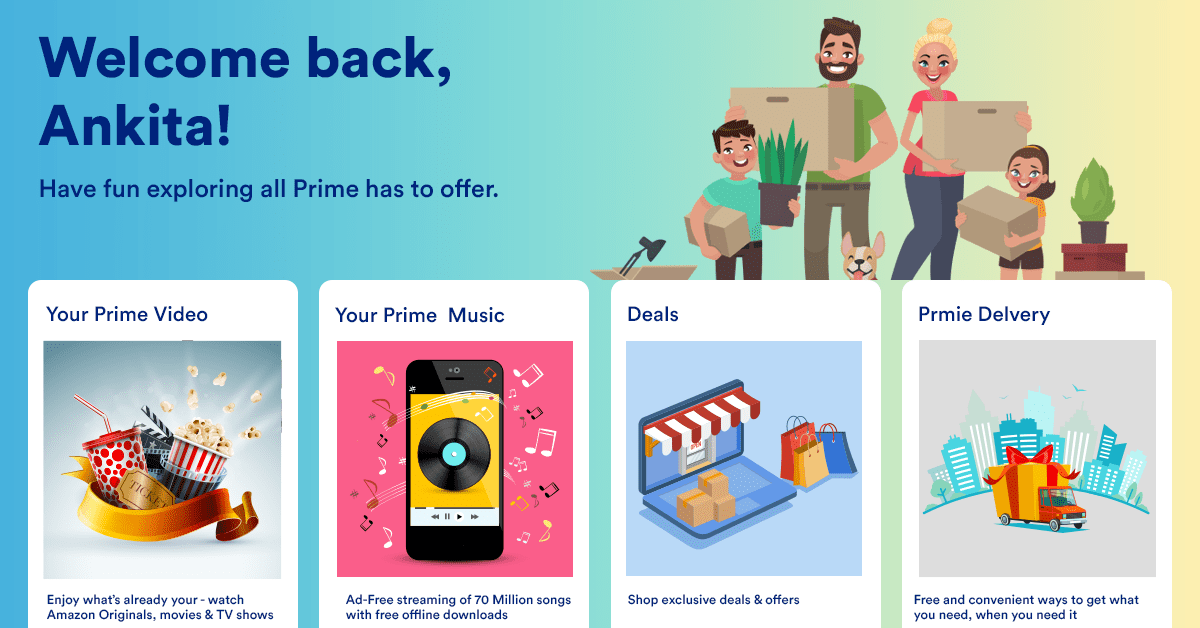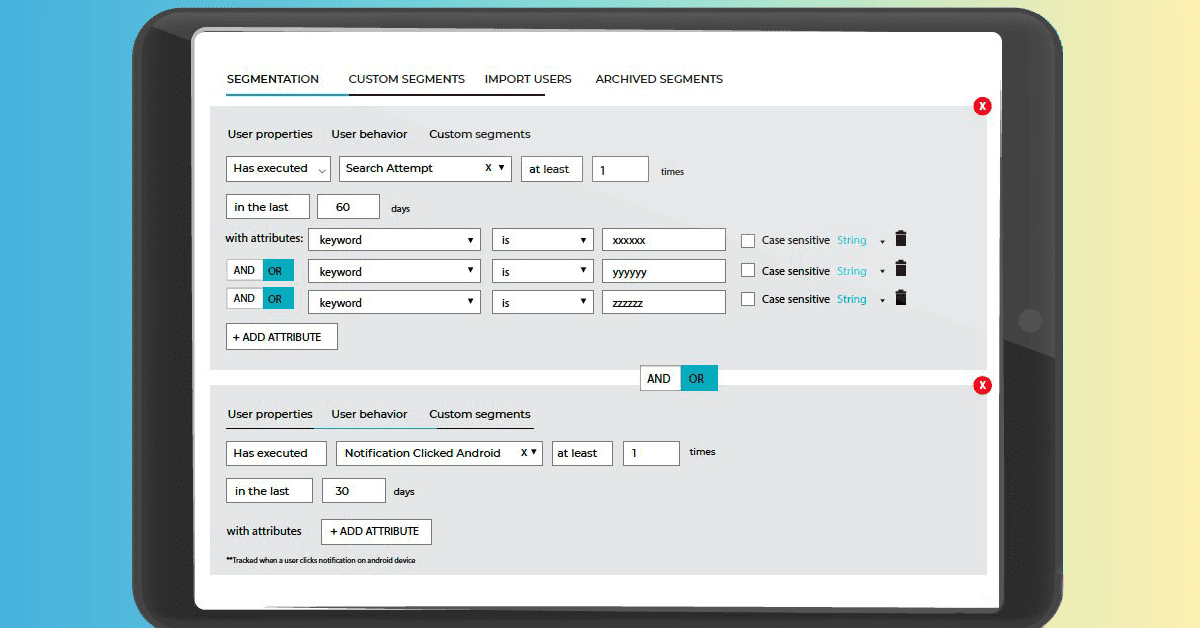Retail Marketing 101: 3 Winning Tactics to Improve Customer LTV

Reading Time: 6 minutes
|
Convenience and cost-efficiency have changed the way customers shop.
Customers would drive to the nearest mom-and-pop store to shop in the past. Then came the hypermarkets like Walmart that promised to deliver everything under one roof. Some even provided additional convenience by delivering products at the doorstep.
Although the brick-and-mortar shops offered convenience and compelled customers to purchase what was available in the store, they could not choose from multiple options or compare prices.
These limitations were resolved by e-commerce companies such as Amazon that made shopping convenient and cost-effective. All thanks to their on-point marketing in retail. Customers could scroll through multiple options of each product, read their descriptions and reviews, compare the prices, and add it to their cart – all from the comfort of their home.
Moving from offline to online
The pandemic was the last straw that urged even first-timers to shop online. According to Statista, 9%of the customers in the U.S. purchased a product online for the first time. This led to an unprecedented increase in e-commerce traffic. E-commerce websites generated 22 billion visits in June 2020, up from 16.07 billion visits in January 2020.
Today, the lines between online and offline touchpoints have blurred as retailers begin to integrate offline and online channels to create a seamless shopping experience for customers. Customers like it too. According to BRP, 87% of the customers expect a consistent experience across all channels. It gives them the power to shop the way they want. For example, some consumers like to add products to the cart and pick it from the nearest store; some others prefer to research online and then purchase those products immediately.
Apart from that, loyalty programs successfully drive shoppers to the nearest stores or the app to claim the best discounts. With every retailer trying to improve the customer’s experience, the onus lies in finding ways to retain the customers. You will have to think of new tactics to improve the customer’s lifetime value (LTV).
This article includes three easy tactics that can help you improve customer LTV.
How to improve customer LTV by enhancing marketing in retail
The retail space is already fraught with cut-throat competition. Global retail sales are poised to reach around $26.7 trillion by 2022. If you want to seek a competitive advantage, you should improve the customer LTV and build customer loyalty. Brands can achieve both these goals through enhanced retail marketing.
You can implement several strategies to enhance retail marketing, such as:
1. Providing convenience
Focus on making shopping convenient for customers. Take Amazon’s example. From free and priority shipping under prime membership to one-click-purchase, Amazon has always managed to keep the customer’s comfort at the heart of their retail strategies. It’s completely different from how typical retailers function. However, Amazon has its drawbacks, too, especially when guiding customers. Too many options can overwhelm customers and lead to decision paralysis. Taking a leaf from this observation, online retailer Snowe which sells bedding, bathroom, and tabletop products, simplified the decision-making process for the customers. They curated their selection and explained why they find the product better. Their recommendation and guidance gave a sense of security to the customers about their decision.
If you don’t want your customers to leave your platform, simplify the shopping experience for them. Make it as easy as possible.

2. Ensuring a consistent experience
Your customer may use online or offline channels to shop. They may also use different devices to shop online. Irrespective of how the customer shops or what devices they use, you must ensure that all the touchpoints are tied together to create a unified experience. Your tactics for marketing in retail should ensure the overall experience is consistent and frictionless. Monitor how your customers shop and integrate all the touchpoints. Your customer might leave your platform if they have a bad experience through the journey. Hence, ensure that every touchpoint offers a shoppable experience to your customer. Train your team members to offer a consistent experience across all channels.
3. Personalizing customer experience
Customers love it when brands personalize their experience. Research by Epsilon showed that 80% of shoppers expected personalization from retailers. If you want to improve the customer LTV, you must focus on personalizing the customer’s experience throughout the customer’s journey. You have to win their trust and loyalty to retain them. Go beyond the hello first name personalization. Create a bespoke experience for them. This could be anything – discounts, special offers, products, etc. Personalize your communication across every touchpoint so they are tempted to engage with you.
Brands that have improved customer LTV
a) Cloud Alchemist
Cloud Alchemist, a Seattle-based vapor boutique brand, improved its customer LTV. Some of the strategies implemented by Cloud Alchemist included – sending individualized emails to each customer. They even sent a personalized handwritten thank you message and the package, which showed their dedication to the customer. Apart from the personalization strategies, Cloud Alchemist also offered loyalty rewards that are relevant to the shoppers who visit the site. They send emails to the customer reminding them to redeem the points they have accrued. All these strategies have enabled Cloud Alchemist to increase its customer’s LTV. It managed to build customer loyalty and gain a bunch of loyal customers who are willing to buy from them repeatedly.
b) Swiss Rasoi
Based in Switzerland, Swiss Rasoi is an online grocery store specializing in selling Indian spices and ingredients. Being a niche segment, Swiss Rasoi had a challenge in hand to build a community of loyal customers. They began with building a brand design that’s consistent across their online store and social media channels. Then they offered their customer additional benefits such as delivering traditional products at the doorstep, free delivery, access to rare spices, and attractive prices. They even conduct flash sales exclusively on their social media channels. As if the prices were not already attractive, Swiss Rasoi also had a loyalty program through which customers could receive additional discounts on their high-quality products. All these strategies contributed to the success of Swiss Rasoi.
c) Tokopedia
Tokopedia is an E-commerce giant in Indonesia. Although they witnessed several customers installing the app, most of them would uninstall it within a month. They took an integrated approach of targeting customers by sending personalized messages using push, emails, SMS, etc. This enabled them to improve customer retention by 60%. It shows that applying the same principles of personalized communication reflecting a customer’s situation is the best way to engage with them.

Three tactics to help customers improve LTV
1. Build a loyalty program for customers
As you might have realized by now, developing a loyalty program is efficient to get more loyal customers. 83% of customers said they would continue doing business with a brand if it offered them a loyalty program. It takes just 8% of loyal, repeat customers to generate 40% of the store’s revenue. As a retail marketer, your core responsibility is to ensure that the customers return to your website or app repeatedly. Building a loyalty program is a great way to get your marketing in retail tactic #1. Create exclusive shopper programs or give extra perks as a token of gratitude to your repeated customers. This will make them value your brand more. Also, ensure that there are no frictions to avail the program. Make it as seamless as possible.
2. Create yearly sales exclusively for customers
Apart from building a loyalty program, you can also create yearly sales for exclusive customers. Take Shopper Stop’s first citizen membership, for instance. Shoppers stop conducting preview sales exclusively for first citizens before opening for other members. First, citizens can redeem the points collected through the card. This shows that the brand cares for its exclusive members and creates a long-lasting bond with them.
Sephora’s Beauty Insider program is another brilliant example where customers can avail personalized product recommendations and exclusive deals such as free makeover on their birthday. You can also conduct exclusive sales for your exclusive customers frequently. Use options such as emails, messages, etc., to send them personalized messages about the exclusive sale. Ensure that they have the option to redeem their loyalty rewards and create exclusive deals so they feel privileged to shop with you. If you are selling a recurring product, you can encourage your customers to shift to annual billing and offer attractive discounts to retain them for a longer duration.
3. Create a convenient shopping option
As mentioned earlier, customers love convenience. So, when you choose the channels to reach out to your customers, choose the ones they use frequently. Ensure that they have the flexibility to shop the way they want. If you have both a brick and mortar shop and an E-commerce website, integrate them, and create a click-and-collect kind of a model instead of operating them as a standalone unit. If you have only one channel, ensure no friction in their shopping experience and remove all roadblocks from different touchpoints. This will empower them to shop conveniently and compel them to shop with you instead of finding an alternative. Observe how your customers shop, what stops them from making the final purchase, etc. so you can create a seamless and personalized experience for them.
Here’s What You Should Do Next
|







